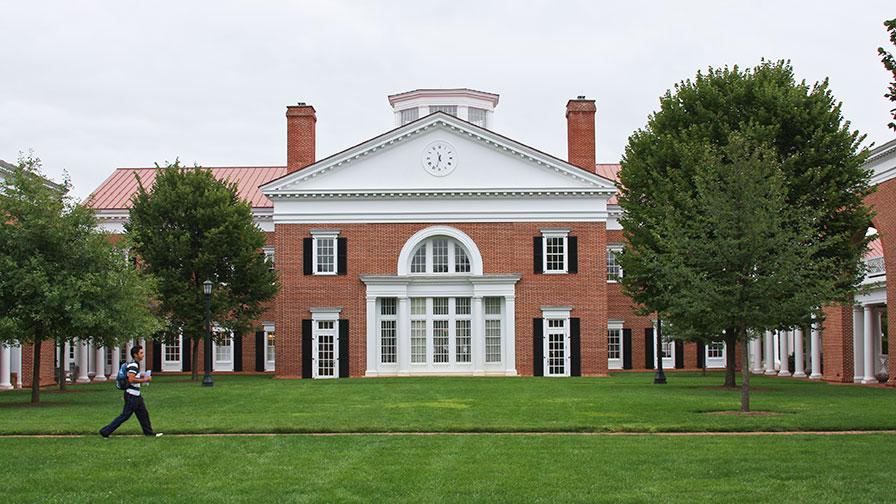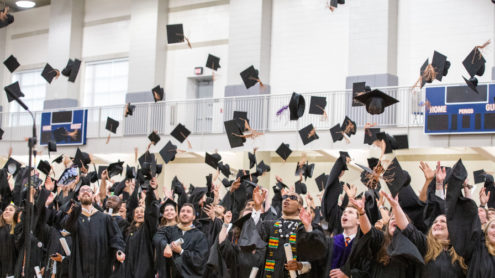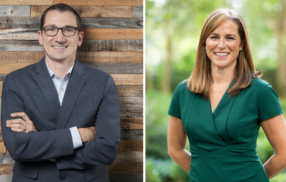
Darden-Wharton Collaboration Brings Together Innovation Scholars and Business Leaders
By Andrew King (Darden) and Michelle Eckert (Wharton)
This year, Wharton’s Mack Institute teamed up with Darden’s Batten Institute to co-host the bi-annual Product Innovation and Technology Management Mini-Conference(PITM). The 6th iteration of this one day event attracted more than 30 scholars to the Wharton School for lectures, discussions, and camaraderie. Both institutes share many goals, including helping business school students confidently embrace the challenges and opportunities that careers in innovation and entrepreneurship offer.
Introductory remarks from Darden Professor Raul Chao and Mack Institute Executive Director Saikat Chaudhuri welcomed scholars from five continents, highlighting the diverse participants and inviting them to share insights on impactful research projects.
“We aim to bring together academia and industry – to bridge theory and practice – so that all our work in research becomes both more rigorous and more relevant,” said Chaudhuri by way of introduction. “I think there couldn’t be a better fit with [the Mack Institute’s] activities, so we’re delighted to work together to make this happen.”
The conference centered on four speakers who presented research and insights on the intersection of innovation theory, practice, and entrepreneurial venturing from both the academic and practitioner perspectives.
SCHOLARLY INSIGHTS
Wharton’s Karl Ulrich is the Vice Dean of Entrepreneurship and Innovation and has a long career developing research in these fields, in addition to launching products of his own. His presentation posed the question, “In what ways can we maximize students’ abilities to create impact through entrepreneurship?”
Ulrich cited widespread challenges in entrepreneurial education: cumbersome IP restrictions on research emerging from university labs; limited faculty bandwidth to fully engage with their students’ ventures; and a demand for entrepreneurial education that exceeds the supply of professors with the right process expertise. Even most classrooms are unsuited for entrepreneurial exercises, with tiered structures not conducive to group collaboration.
Professor Ulrich encouraged the audience to consider the many approaches for integrating action-learning into the entrepreneurship curriculum. He provided examples of programs such as the University of Utah’s Lassonde Studios, a facility which will combine dorms, classrooms, and maker space to erase as fully as possible the distinction between living and studying entrepreneurship. Ulrich applauded such efforts to foster student entrepreneurship by better integrating curriculum and incubation, and encouraged the audience to drive change at their own universities. Calling up Steve Jobs’ famous quote, he pointed out, “It’s more fun to be a pirate than to join the Navy.”
In the spirit of experimenting with new ways of teaching, Darden Professors Chao and Hutchinson-Krupat have developed a novel class based in Darden’s iLab called Product Innovation. This experiential class teaches students how to rapidly prototype their ideas and the intricacies of gleaning valuable feedback from potential early customers.
The second speaker, Daniel Levinthal, chairs Wharton’s Management Department and has built his expertise around organizational learning. He has authored dozens of influential research articles that have advanced the ways business schools teach students the art of generating viable innovations.
Professor Levinthal highlighted research that helped unpack the complexities of organizational ecosystems where learning takes place. He shared his interest in the paradox that innovating organizations always face, captured in a quote from the Greek philosopher Heraclitus: “Everything changes and nothing remains still … you cannot step twice into the same stream.” Essentially, as individuals and their teams gain novel capabilities, they face the challenge of integrating that new knowledge into their organizations which historically have excelled in providing stable routines to ensure efficiency.
Professor Levinthal suggested that research on sustainable ecologies of learning individuals – by investigating how leaders can create these supportive, sustainable cultures and simultaneously integrate fresh ideas into value generating activities – would have an outsized impact on the speed at which organizations could innovate.
PRACTICAL IMPLICATIONS
In the second half of the event, Robert Boland and Dr. Ari Brooks provided rich stories of innovation that illuminated how theories of innovation unfold in the marketplace.
Mr. Boland has nurtured innovation ecosystems at Johnson and Johnson’s pharmaceutical business, Janssen, as its Senior Manager of Translational Informatics & External Innovation. He shared his passion for helping his organization further refine its ability to collaboratively innovate with other organizations. While many companies are fiercely secretive of innovation activities, Mr. Boland helps Janssen engage with other pharmaceutical and biotechnology companies at a pre-competitive level to uncover shared value. Through well-established and new consortia, Mr. Boland has been helping build Janssen’s skills to innovate collaboratively across a broad spectrum of stakeholders to find new and previously hidden value propositions.
He conceded that working with many organizations to develop new IP is a tightrope walk, and the process is innovative in and of itself. One advantage of such an approach to R&D is that the organizations involved continually learn methods for generating novel creations, proving that innovation is not always a zero-sum game played against competitors. Boland highlighted the International Space Station as an analogy for how combining resources and talent across a spectrum of organizations can lead to larger order creations that no one organization could make on its own.
Also sharing real-world innovation stories was Dr. Brooks, who worked with a start-up venture to develop a new biomedical device. His role as the Director of the Breast Center at the University of Pennsylvania’s Hospital put him in a good position to advise an entrepreneurial team on the development of a novel breast cancer diagnostic tool. His experiences with this company’s growth helped him realize that venture success relies on three key factors: a promising idea that meets a tangible need, a capable team, and adequate pre-revenue funding.
His own team’s good idea – using sensitive palpation sensors to detect tumors – kept them motivated to continue refining the prototypes. Over a ten year development process, they had to overcome many hurdles, including engineering challenges, regulatory demands, and testing their device in real-world settings. Their tenacity, combined with Dr. Brooks’ knowledge of breast cancer detection, helped the group negotiate these hurdles and put the device on the path to production. Ultimately, the team learned that breast cancer diagnostics in the first world is highly advanced and a difficult market to enter. Undeterred, they realized that the new device could increase access for breast cancer testing in developing nations, and that’s where they are focusing their efforts now.
EMERGING RESEARCH
The conference continued its tradition of offering awards for the best student papers. This year’s winner, Tian Chan from INSEAD, won with his research that developed a novel method for investigating how innovations get adopted and copied in the marketplace. He tracked the evolution of handsets in the mobile phone industry from flip phones to today’s ubiquitous slates. His research found that as that the industry matured, manufacturers were able to ever more quickly adapt to consumer demands for novel phone designs, spurring even faster innovation cycles.
LOOKING BACK
After the event, Darden’s Professor Jeremy Hutchison-Krupat reflected on the conference and summed up its unique contributions:
We organized the PITM conference to center not only on innovation research and the practice of innovation, but also on the content of an innovation curriculum, which is increasingly popular both at Darden and Wharton. Bringing these three things together rather than addressing them in isolation is distinctive and valuable given that the academics who attend this conference have a three-part goal to educate and inspire the next class of entrepreneurs and innovators, understand and improve the practice of entrepreneurship and innovation, and generate new and relevant academic research on innovation and entrepreneurship.
The University of Virginia Darden School of Business prepares responsible global leaders through unparalleled transformational learning experiences. Darden’s graduate degree programs (MBA, MSBA and Ph.D.) and Executive Education & Lifelong Learning programs offered by the Darden School Foundation set the stage for a lifetime of career advancement and impact. Darden’s top-ranked faculty, renowned for teaching excellence, inspires and shapes modern business leadership worldwide through research, thought leadership and business publishing. Darden has Grounds in Charlottesville, Virginia, and the Washington, D.C., area and a global community that includes 18,000 alumni in 90 countries. Darden was established in 1955 at the University of Virginia, a top public university founded by Thomas Jefferson in 1819 in Charlottesville, Virginia.
Press Contact
Molly Mitchell
Associate Director of Content Marketing and Social Media
Darden School of Business
University of Virginia
MitchellM@darden.virginia.edu





